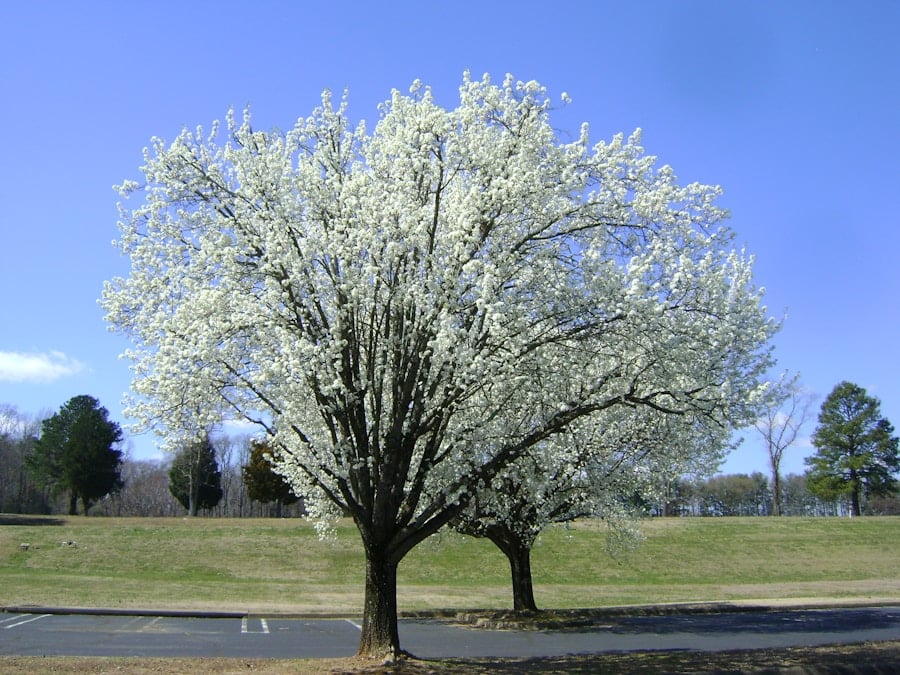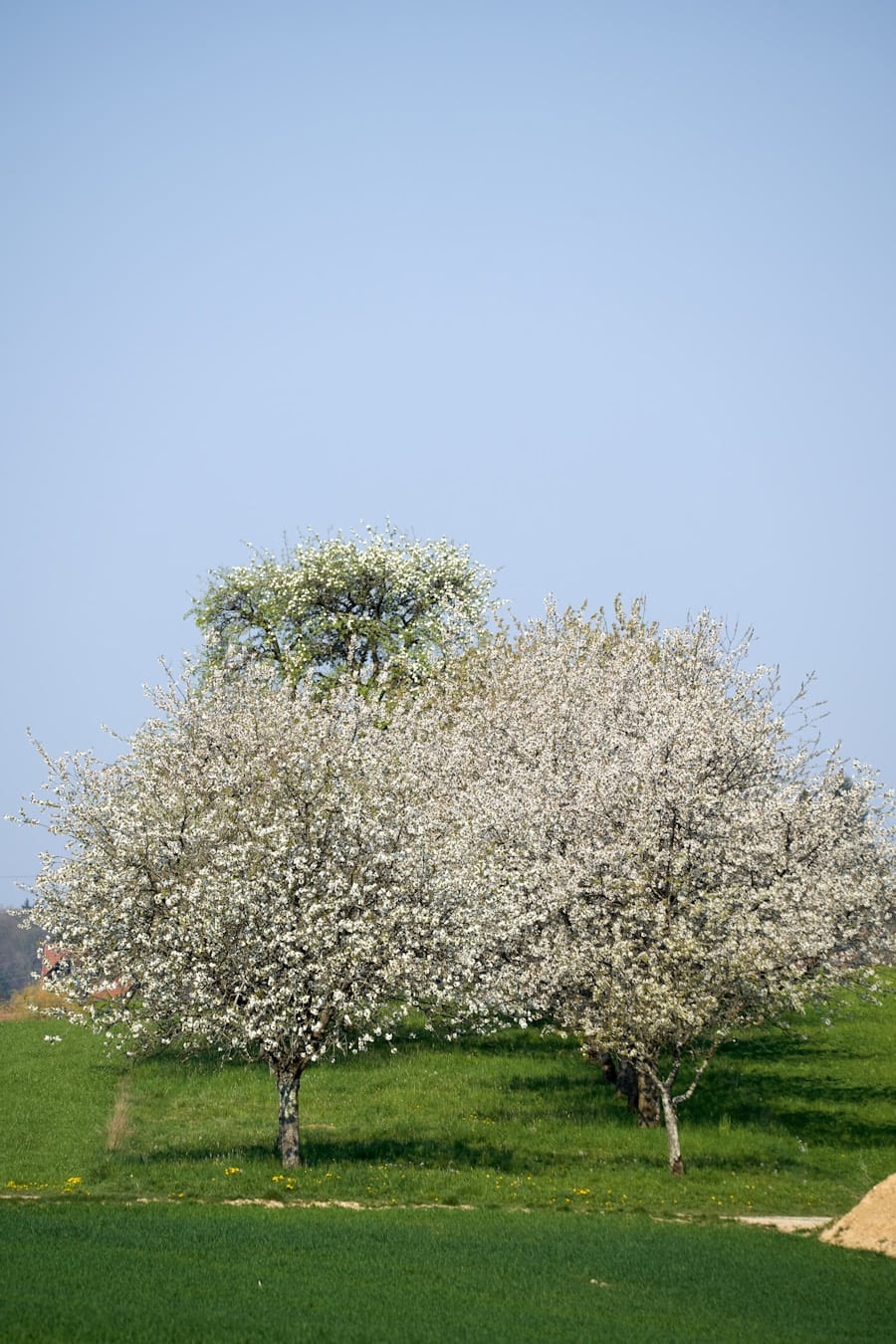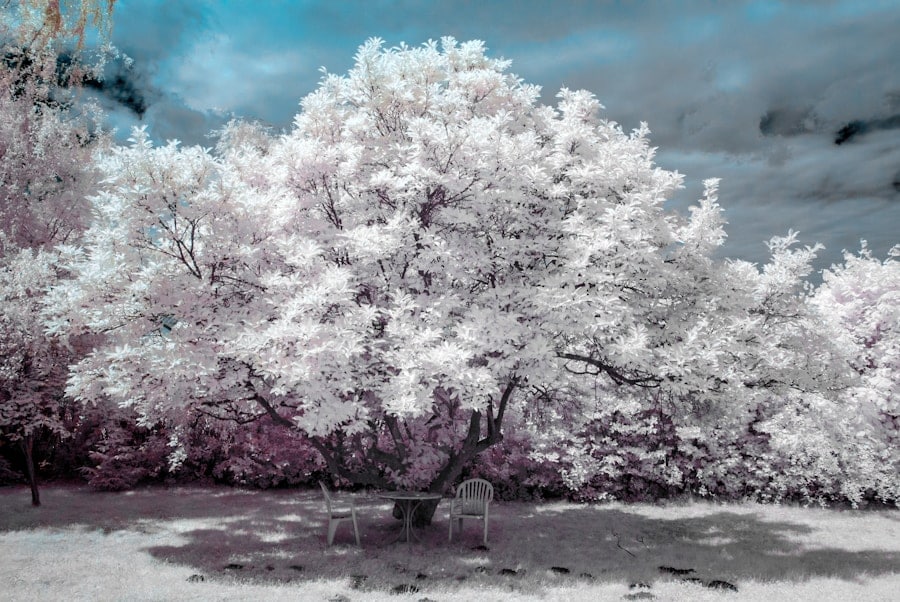As I stroll through the picturesque landscapes of Michigan, I am often captivated by the stunning display of white flowering trees that grace the state during the spring months. These trees, with their delicate blossoms, create a breathtaking contrast against the vibrant greens of the surrounding foliage. The sight of these trees in full bloom is not just a visual delight; it also marks the arrival of warmer weather and the renewal of life after the long, harsh winters that Michigan is known for.
The beauty of white flowering trees is a reminder of nature’s resilience and its ability to transform the landscape into a canvas of color and fragrance. In Michigan, the white flowering trees are more than just ornamental; they play a significant role in the ecosystem. They provide essential habitats for various wildlife species and contribute to the overall health of the environment.
As I delve deeper into the world of these trees, I find myself appreciating not only their aesthetic appeal but also their ecological importance. From cherry blossoms to dogwoods, each species brings its unique charm and benefits to the ecosystem, making them a vital part of Michigan’s natural heritage. Visit Our Site at https://chikusgarden.com/ for more information.
Key Takeaways
- White flowering trees add beauty and charm to Michigan’s landscape, especially in the springtime.
- Some common types of white flowering trees found in Michigan include the dogwood, cherry, and magnolia trees.
- The best locations to view white flowering trees in Michigan include public parks, botanical gardens, and nature reserves.
- White flowering trees play a crucial role in Michigan’s ecosystem by providing food and habitat for wildlife, as well as contributing to the overall biodiversity.
- To grow and care for white flowering trees in Michigan, it’s important to choose the right location, provide proper maintenance, and protect them from harsh winter conditions.
Types of White Flowering Trees Found in Michigan
Michigan is home to a diverse array of white flowering trees, each with its unique characteristics and charm. One of the most iconic species is the Eastern Flowering Dogwood (Cornus florida). This tree is renowned for its stunning white blooms that emerge in early spring, often before the leaves fully unfurl.
The dogwood’s flowers are not only beautiful but also attract pollinators like bees and butterflies, making it a vital part of the local ecosystem. I find myself drawn to these trees, especially when they are in full bloom, as their flowers create a soft, ethereal canopy that transforms any landscape into a fairy tale setting. Another remarkable species is the White Cherry Tree (Prunus serotina), which graces Michigan with its fragrant white blossoms.
These trees typically bloom in late April to early May, creating a spectacular display that can be seen in parks and along streets. The sweet scent of cherry blossoms fills the air, inviting me to take a moment to pause and appreciate nature’s artistry. Additionally, the Black Locust (Robinia pseudoacacia) is another white flowering tree that I admire for its clusters of fragrant white flowers that hang like delicate pendants.
This tree not only adds beauty to the landscape but also plays a crucial role in soil stabilization and erosion control.
Best Locations to View White Flowering Trees in Michigan

When it comes to experiencing the beauty of white flowering trees in Michigan, there are several locations that stand out as must-visit spots. One of my favorite places is the Frederik Meijer Gardens & Sculpture Park in Grand Rapids. This expansive garden features a stunning collection of flowering trees, including dogwoods and cherry trees, set against a backdrop of meticulously designed landscapes.
Walking through this garden during springtime feels like stepping into a living painting, where every corner reveals new blooms and fragrances. Another fantastic location is the Detroit Riverwalk, where I often find myself wandering along the waterfront. The riverwalk is lined with various trees, including beautiful white flowering varieties that create a picturesque setting against the backdrop of the Detroit skyline.
The combination of nature and urban scenery makes this spot particularly special for me. Additionally, local parks such as Belle Isle Park and Kensington Metropark offer ample opportunities to view these stunning trees in their natural habitats, providing a serene escape from the hustle and bustle of daily life.
The Importance of White Flowering Trees to Michigan’s Ecosystem
| White Flowering Trees | Importance to Michigan’s Ecosystem |
|---|---|
| Serviceberry | Provides early season nectar for pollinators and fruits for birds |
| Black Cherry | Supports over 400 species of caterpillars and provides food for birds |
| Hawthorn | Produces berries that are important food source for wildlife |
| Wild Plum | Attracts pollinators and provides food for birds and mammals |
The significance of white flowering trees extends far beyond their visual appeal; they play an integral role in maintaining Michigan’s ecosystem. These trees provide essential habitats for various wildlife species, including birds, insects, and small mammals. As I observe these trees throughout different seasons, I am reminded of their importance as food sources for pollinators during spring when they bloom.
The nectar-rich flowers attract bees and butterflies, which are crucial for pollination and maintaining biodiversity. Moreover, white flowering trees contribute to soil health and stability. Their root systems help prevent erosion and improve soil structure, allowing other plants to thrive alongside them.
I often marvel at how these trees work in harmony with their environment, creating a balanced ecosystem that supports life in various forms. By providing shade and shelter, they also create microclimates that benefit other flora and fauna, making them indispensable components of Michigan’s natural landscape.
Tips for Growing and Caring for White Flowering Trees in Michigan
For those interested in cultivating their own white flowering trees in Michigan, there are several tips I have found helpful over the years. First and foremost, selecting the right species for your specific location is crucial. Understanding your soil type, sunlight exposure, and climate conditions will help you choose a tree that will thrive in your yard.
For instance, Eastern Flowering Dogwoods prefer well-drained soil and partial shade, while White Cherry Trees can tolerate full sun. Once you have chosen your tree, proper planting techniques are essential for its long-term health. I always ensure that I dig a hole that is twice as wide as the root ball but no deeper than necessary.
This allows the roots to spread out while preventing water from pooling around them. Regular watering during dry spells is also important, especially during the first few years as the tree establishes itself. Additionally, I recommend mulching around the base to retain moisture and suppress weeds.
The Symbolism and Cultural Significance of White Flowering Trees in Michigan

White flowering trees hold deep symbolism and cultural significance in Michigan and beyond. For many people, these trees represent renewal, hope, and new beginnings—qualities that resonate strongly with me as I witness their blooms each spring. The fleeting beauty of their blossoms serves as a reminder to appreciate life’s transient moments and embrace change.
In various cultures, cherry blossoms symbolize the beauty of life and its impermanence, making them particularly poignant during springtime. In Michigan’s communities, white flowering trees often serve as focal points for celebrations and gatherings. Festivals celebrating cherry blossoms or dogwoods bring people together to appreciate nature’s beauty while fostering a sense of community pride.
As I participate in these events or simply enjoy a quiet moment beneath these magnificent trees, I feel connected to both nature and my fellow Michiganders who share this appreciation for our state’s natural wonders.
White Flowering Trees in Michigan: A Photographer’s Dream
As an avid photographer, I find that white flowering trees present endless opportunities for capturing stunning images throughout their blooming season. The soft white petals against a backdrop of blue skies create striking contrasts that make for breathtaking photographs. Whether I’m focusing on close-up shots of individual blossoms or capturing wide-angle views of entire groves in bloom, each photograph tells a story about nature’s beauty.
The golden hour—just before sunset—offers particularly magical lighting conditions for photography among these trees. The warm glow enhances the delicate petals while casting soft shadows on the ground below. I often find myself wandering through parks or gardens during this time, camera in hand, eager to capture fleeting moments that showcase the ephemeral beauty of these blossoms.
Each click of my shutter feels like an attempt to freeze time and preserve the enchanting essence of spring.
The Best Times to View White Flowering Trees in Michigan
Timing is everything when it comes to experiencing the full splendor of white flowering trees in Michigan. Typically, late April through early May marks the peak blooming period for many species, including dogwoods and cherry trees. During this time, I make it a point to visit my favorite locations to witness these trees at their most vibrant.
The sight of entire landscapes transformed by clouds of white blossoms is nothing short of magical. However, it’s essential to keep an eye on weather conditions as they can influence blooming times from year to year. A warm spring may lead to earlier blooms, while cooler temperatures can delay them.
I often check local gardening resources or community events for updates on blooming schedules so that I can plan my visits accordingly. By staying informed about these natural cycles, I ensure that I don’t miss out on witnessing one of nature’s most beautiful displays right here in Michigan. In conclusion, my journey through Michigan’s landscapes has been enriched by the presence of white flowering trees.
From their ecological importance to their cultural significance and breathtaking beauty, these trees have left an indelible mark on my heart. Whether I’m photographing their blooms or simply enjoying their presence during leisurely walks, I am continually reminded of nature’s ability to inspire awe and appreciation for the world around us.
If you are interested in white flowering trees in Michigan, you may also enjoy reading about a spectacular display of purple and white flowers in gardens. Check out this article on stunning purple and white flowers to see more beautiful blooms that can enhance your outdoor space.
FAQs
What are some common white flowering trees in Michigan?
Some common white flowering trees in Michigan include the flowering dogwood, serviceberry, crabapple, and white fringetree.
When do white flowering trees typically bloom in Michigan?
White flowering trees in Michigan typically bloom in the spring, usually between April and June, depending on the specific species.
Are white flowering trees in Michigan native to the region?
Some white flowering trees, such as the serviceberry, are native to Michigan, while others, like the flowering dogwood, may be introduced species that have become naturalized in the region.
Do white flowering trees require special care in Michigan’s climate?
White flowering trees in Michigan may require some special care, such as protection from harsh winter winds and proper pruning to maintain their health and shape.
Can white flowering trees attract wildlife in Michigan?
Yes, white flowering trees can attract wildlife in Michigan, including birds and pollinators, which can help support the local ecosystem.

